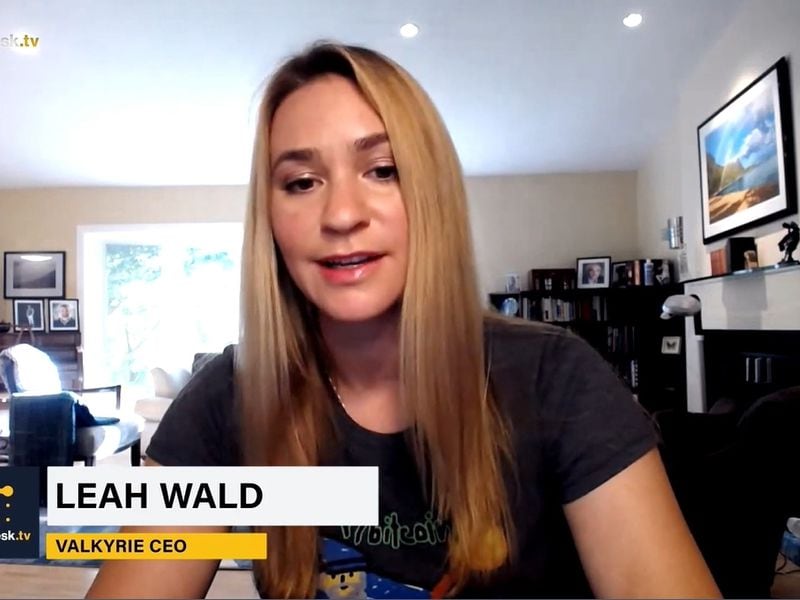Azuki ‘Elementals’ Mint Mishap Highlights the Fragile State of the NFT Market
On Tuesday, non-fungible token (NFT) brand Azuki opened up sales for its new “Elementals” NFT collection, a 20,000-edition derivative of its wildly-popular, original Azuki collection. The new release was teased to major fanfare, as passionate holders waited for the latest expansion of the anime-inspired Azuki ecosystem.
Collectors have held their breath – and their bags – waiting for signs of growth from Azuki, which teased ambitious plans for a metaverse platform, interactive experiences, physical goods and a native token earlier this year. And while the project has released collaborations with fashion brand Ambush and an impressive but impractical NFT-backed golden skateboard, its last major expansion to its character universe came from the release of its BEANZ collection in March 2022. Azuki has also faced some major challenges in recent months, including a hack on its Twitter account and an admission from its founder that he had abandoned past projects, rocking confidence in the project.
Still, Azuki has largely remained at the top of the NFT leaderboard since it launched in January 2022, despite market conditions that have worsened over time. According to data from secondary marketplace OpenSea, the project has raked in 588,674 ETH or just over $1 billion, in trading volume. BEANZ has also provided major cash to Chiru Labs, the parent company behind Azuki. According to OpenSea, the project has brought in 166,373 ETH, or about $304 million, in trading volume.
To maintain momentum, the team needed a major win.
Enter Azuki “Elementals,” which NFT holders hoped would reinforce the project’s foundations and propel the brand forward. But despite best efforts, the mint was tainted with technical issues, questionable mint mechanics and allegedly duplicated artwork that sunk the Azuki and BEANZ floor prices. At the time of writing, the floor price for Elementals NFTs was hovering around 1.5 ETH (about $2,700) on OpenSea, falling below its original mint price of 2 ETH in just over 24 hours – meaning that holders were selling at a loss.
Considering Azuki’s dominance, the latest mint mishap has broader implications for the NFT market and highlights how even blue-chip NFT projects are struggling to grow during a particularly challenging bear market.
In true Azuki fashion, the Elementals mint generated hype before it even began.
Last Friday, the Azuki team held a token-gated event in Las Vegas called “Follow the Rabbit,” where they airdropped a portion of the unrevealed Elemental NFTs to holders in attendance. On Monday, the team announced details of the mint, explaining that the remaining Elemental NFTs would be sold in 10-minute rounds – first to holders of Azuki NFTs, then to BEANZ holders and then to the general public. The sale was meant to be held Dutch auction style, where the price of the NFTs would begin at 2 ETH and would decrease by 0.1 ETH, or about $200, every five minutes until all of the NFTs were sold.
On Tuesday, eager Azuki community members flocked to the minting site to purchase NFTs at 2 ETH each. Within 15 minutes, all of the NFTs had sold out, bringing in 20,000 ETH in primary sales, worth just over $38 million at the time. According to Punk 9059, director of research at PROOF, one holder spent over $1.5 million on several hundred NFTs.
But while the mint initially appeared a success, many disgruntled holders took to Twitter to express their frustrations with the way it played out.
Of the 10,000 NFTs available during the presale, 7,600 were minted by Azuki holders, said pseudonymous Azuki co-founder Location TBA, leaving BEANZ holders to scramble for the remaining 2,400. Some Azuki holders complained that because of technical difficulties, they weren’t able to mint at all.
Twitter user BenWasOnline said that despite having “multiple browsers prepped and loaded,” he still experienced technical issues that prevented him from participating in the sale.
“Congratulations for selling out in this market, but you guys just really disappointed a huge amount of your collectors,” BenWasOnline wrote.
In response, Location TBA posted a Twitter thread apologizing for the disruptions and blamed some of the issues on greater-than-expected traffic to the site.
“The team and I feel gutted over what happened. We wanted to put together a dope experience for you all,” said Location TBA. “I take personal responsibility for what happened, and should have lengthened the presale windows.”
‘Basically identical’ artwork
Frustration continued to mount after the mint when the Azuki team finally revealed the NFT art to anxious holders. Soon after, several collectors alleged that the Elementals collection featured strikingly similar artwork to the original Azuki collection – even down to the metadata of some NFTs.
While some collectors were excited about their NFTs, others were disappointed in what appeared to be a perfunctory artistic endeavor.
Twitter user PlantedSlightly wrote in a since-deleted tweet that the move felt “back-handed” as a dedicated collector.
“Collecting Azukis always felt special, doesn’t feel like that today for me. I’m more sad than angry or disappointed,” tweeted PlantedSlightly. “99% of the mistakes were too obvious to miss.”
User Cirrus NFT pointed out an even more egregious dupe, with what appeared to be two identical NFTs in the same collection. Another user pointed out a similar issue across multiple pairs of identical NFTs.
Azuki co-founder 2PM Flow was quick to attribute the error to a “technical glitch where the metadata for a few tokens were processed incorrectly.” It appears that the metadata for these NFTs has since been corrected.
In the wake of the artwork’s reveal, some users speculated that Azuki purposefully diluted the value of its collection through a massive increase in the supply – an accusation that Azuki later apologized for.
The challenges of a vicious bear market
In the hours following the Elementals mint, the floor price of Azuki plummeted as collectors responded to the controversy. While Azuki said that the mint was meant to “welcome new members into the community,” over 94% of the Elementals NFTs remained in the wallets of existing Azuki members, Nansen tweeted on Wednesday.
Pseudonymous Twitter influencer NFT God suggested that the mint reflected a broader dilemma that profile-picture (PFP) NFT collections – popularized on social media during the bull run – face during market downturn.
“They had 2 options: Do nothing, people sell, and the price goes down, or dilute their collection with even more NFTs, people sell, and the price goes down,” said NFT God.
NFT collector and creative Charlotte Fang told CoinDesk that in recent months, PFP projects have been forced to find new ways to extract value from their holders in order to stay afloat.
“The classic generative PFP NFT mint model is a lottery that normally provides the opportunity to profit immediately by flipping unrevealed mints due to oversubscription as people speculate on the chance of pulling a rare [trait],” said Fang. “When collections over increase the supply or use auction models, they eliminate this speculative opportunity in exchange for maximum extraction, harming their own audience’s ability to profit.”
Azuki later admitted that it “missed the mark.”
“Our goal for Elementals is to grow the Garden, welcome new members into the community, and most importantly to expand the Azuki universe and set a foundation for a decentralized IP with deep lore,” the Azuki team said. “However, our ambitious goals led to a new collection which confused the community on the tangible differences with the original Azuki collection.”
The brand has since airdropped new NFTs called “Green Beans” to select collectors.
As PFP collections fight for dominance in a changing NFT landscape, it is important for creators to find solutions that deliver value back to their communities. Still, it appears that even shaky mints have the ability to pump much-needed movement into the NFT market.
According to data from Dune Analytics researcher SeaLaunch, Tuesday’s aggregated NFT marketplace trading volume surpassed 35,000 ETH, or just over $64 million at the time of writing – the biggest volume day since early March.
Edited by Rosie Perper.









